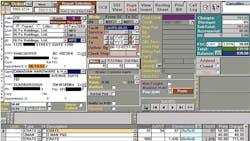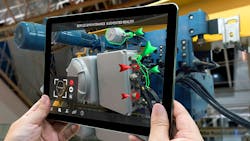You can’t miss the latest leaps in technology, with newsfeeds, social media and the worldwide e-connections we have with friends, family, colleagues and institutions.
That means you viewed some incredible new products in 2017, right? Probably on your screen rather than in real life, but still, incredible: A surgeon using artificial reality to operate. A stealth drone you covet. A robot doing backflips.
So. With all this cool hot tech, how are the users doing in our industry? The people that actually operate all the new technology and systems?
In my experience, the service and tech control giants are still delivering Soviet-era look-and-feel — meaning they’re indestructible and will last a lifetime. They might even work for your grandchildren! They’re also 100% on spec and 100% for the last century — or maybe the century before that. (The Soviet Union crashed, right, despite building indestructible products with Siberian warm-and-fuzzy?)
How Bad is Today’s UX for the Manufacturing World?
To begin, here’s an example of a 100% on-spec, indestructible dashboard:
Now, here’s another example. This is what today’s tech giants in manufacturing are delivering, for million-dollar plant systems:
Somehow, manufacturing tech giants in the West think they’re still in the Cold War, designing control panels that look like they belong on M26 Pershing tanks. There’s nothing here for users! Indestructible. Boring. Last century. I’d give them an F-minus in user experience.
Question: Would you buy a Tesla that featured the dashboard above? Would you even buy a cellphone with the UX above? Or a child’s digital toy?
I certainly wouldn’t spend $100,000 on a car with that decades-behind front-end interface. So, why do plants buy million-dollar systems with a shabby user experience?
Why Are We Still Here?
Today’s programmers are delivering incredible, powerful systems … that they themselves would decline to use on their phones, if they could try them. I guarantee they would delete the app. (The same app, I want to note, that they might have developed themselves for a customer, involving considerable planning, problem-solving and hard work!)
I’m not blaming the programmers, however. It’s a bigger problem than that. Suppliers as a whole in our industry haven’t clocked to the fact that a better UX delivers higher uptake, fewer errors, better performance and greater job satisfaction — in other words, a higher ROI, across many fronts.
And given the high failure rate of major software initiatives (in particular user adoption), why would you take the risk?
What’s Available Today?
We can now surround and extend our current manufacturing systems with some incredibly hot stuff:
• Industry 4.0 and the Industrial Internet of Things
• Smart manufacturing
• Big data
• Analytics
• Machine learning
• Augmented reality
• Virtual reality
What Would You Choose?
Here are three questions for you. First, which dashboard would you choose for your new car?
Next: how do you want to drive your plant?
Finally: Isn’t it time the customer demanded more? Especially considering the incredible payoff from excellence in UX? Because it’s looking like the buyers might have to be the ones that drive this change. The suppliers aren’t going to get shuffling on their own!
For You Tech-Lovers: How to use AR for UX
Check out the latest in talking wine bottles! And note, if your wine bottle can talk to you, so can your machinery. And what better UX is there than to use AR to make equipment checking and/or maintenance easier, faster and better?








